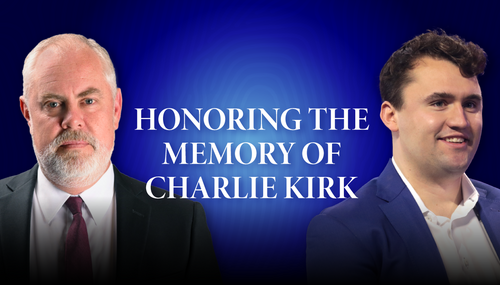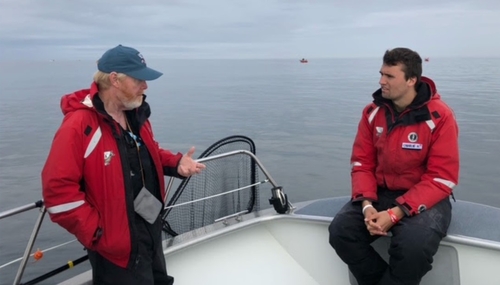Some of its readers turn first to the op-ed pages, or the sports section, or the news out front. Then there are those who waste no time and get right to the corrections in the New York Times.
Aficionados of this journalistic art form were rewarded over the last few days with an array that was especially satisfying.
Here's one that topped the list today --
FRONT PAGE
An article on Wednesday about President Obama's State of the Union address, in which he said better politics would allow Republicans and Democrats to come together on reforming the criminal justice system, referred incorrectly to the death of Eric Garner on Staten Island. He died after being placed in a chokehold by a police officer; he was not shot to death.
Just out of curiosity, did your jaw drop too after reading that ...?
Not only did Garner's death last July merit considerable media coverage, a Staten Island grand jury's decision in December against indicting a police officer in his demise added fuel to the fire of often violent anti-police protests across the nation after another grand jury in Missouri, nine days earlier, declined to indict a Ferguson police officer in the shooting death of Michael Brown last August. ("Failed" to indict was NBC Nightly News anchor Brian Williams' scrupulously objective take).
This a major local story for the Times and the article in which the error occurred was placed on page one, which means that more editors could be expected to see it than would a short feature buried deep inside. Presumably it wasn't a couple of people who were culpable, the reporter and a sole editor, in letting the error slip past; more like the reporter and motley crew invariably found on nearly any copy desk.
What's amazing about this correction is that it's reminiscent of another that ran in the Times last December --
An earlier version of this article misidentified, on second reference, the person who was shot in Ferguson, Mo. It was Michael Brown, not Darren Wilson. An earlier version of this article also referred incorrectly to the shooting of Trayvon Martin. He was killed by a civilian, not by a police officer. In addition, an earlier version of this correction misspelled Trayvon Martin's given name as Travyon.
As my NewsBusters colleague Tom Blumer trenchantly observed -- "It takes special collective talent to confuse Michael Brown and Darren Wilson, believe that neighborhood watch person George Zimmerman was a cop, and misspell Trayvon Martin's name, all in just one report. Also note, given the reference to "an earlier version of this correction," that it took two corrections for the Times to get these basic items in order.
This just might qualify as my favorite correction ever and could also make the Times rethink its efforts at extending affirmative action hires to the comatose.
Hence my amusement to see a similar correction in the Times today, little more than a month after that spectacular trifecta. Another from yesterday surely raised eyebrows, and not only of nitpicker conservative bloggers --
An article on Wednesday about an agreement to resolve pollution issues that occurred because of Los Angeles's use of water from Owens Valley misidentified the method by which water was moved south to the city, beginning in 1913. An aqueduct was used, not an aquifer.
Aqueduct, aquifer, aqualung, whatever. Most troubling of all, the editor(s) who vetted this story most likely never saw the noir classic Chinatown, which is cited in the article as having been inspired by disputes between land owners in Owens Valley and municipal officials in Los Angeles over the city's water supply. That aside, you'd think that anyone getting hired to edit at the Times knows the difference between a (naturally occurring) aquifer and a (manmade) aqueduct.
Here's another correction that ran on Thursday for a story that, in retrospect, more closely resembles a car wreck --
An article on Monday about the recent use of aerial banners to broadcast criticism over the New York region referred incorrectly to the sponsorship of a message demanding that Mayor Bill de Blasio apologize to the New York police. He is Michael Sheehan, a retired Westchester County corrections officer; it is not the case that the sponsor's identity remained undisclosed. Because of an editing error, a picture caption also misidentified that banner's sponsor as Retired N.Y.P.D. for a Safe New York. And because of an editing error, a picture caption in some editions described incorrectly Ashley Chalmers, the owner of an aerial advertising business. The photograph, of Mr. Chalmers standing by his plane, showed him displaying a banner with a message for the mayor, not preparing to fly it.
Ah, the perils of anonymous sources -- especially those not seeking anonymity.
It wasn't the only cluster correction to run in Thursday's Times. This one was for a story in the Style section --
An article on Jan. 1 about Evgeny Lebedev, who owns several British news media outlets, including The Evening Standard and The Independent, misidentified Charles Wintour's former position at The Evening Standard. He was the editor, not the deputy editor. The article also misstated the size of The Independent's online audience, and its growth rate over the last year. It has 53.3 million unique monthly users, not 35 million; its increase in unique monthly browsers was 85.7 percent, not 87 percent. And the article misstated the proportion of The Independent's unique monthly users in the United States. It is 30.8 percent, not 35 percent.
All of which means it will be a long time indeed, if ever, that the Times runs another story on British media outlets that include The Evening Standard and The Independent, seeing how they obviously employ snobs with an odd fixation on accuracy.
Still another cluster correction Thursday, this one for the op-ed pages --
An editorial on Monday about a case involving judicial campaigns misspelled the plaintiff's first name. It is Lanell Williams-Yulee, not Yanell. It misstated the number of Florida Supreme Court justices who resigned following corruption scandals. It was three, not four. It also incorrectly identified Justice Paul E. Pfeifer as a former justice of the Ohio Supreme Court. He is a current member of that court.
Wednesday's paper brought this unfortunate correction of a front-page story --
An article on Tuesday about the harsh treatment of animals at the U.S. Meat Animal Research Center in Nebraska described incorrectly an experiment with cows intended to produce more twins. Eggs -- not embryos -- were fertilized with semen.
Think about that -- what are the odds that neither the reporter who wrote the story, nor those who edited it, never had that birds-and-bees conversation with their parents and somehow also managed to evade both high school and college biology?
Last but not least amusing was this one on Wednesday for a business story --
An article on Saturday about a decision by the car-hailing service Uber to require more extensive background checks of its drivers in India referred incorrectly at several points to the head of Uber's safety division in India. The executive, Deval Delivala, is a woman.
Since the Times still uses courtesy titles, unlike many papers that abandoned them long ago to save on newsprint, ink and space, such mistakes are inevitable. The story quotes Delivala from a "statement," which means the reporter probably took her remarks off a press release and did not speak with "Ms." Delivala.




